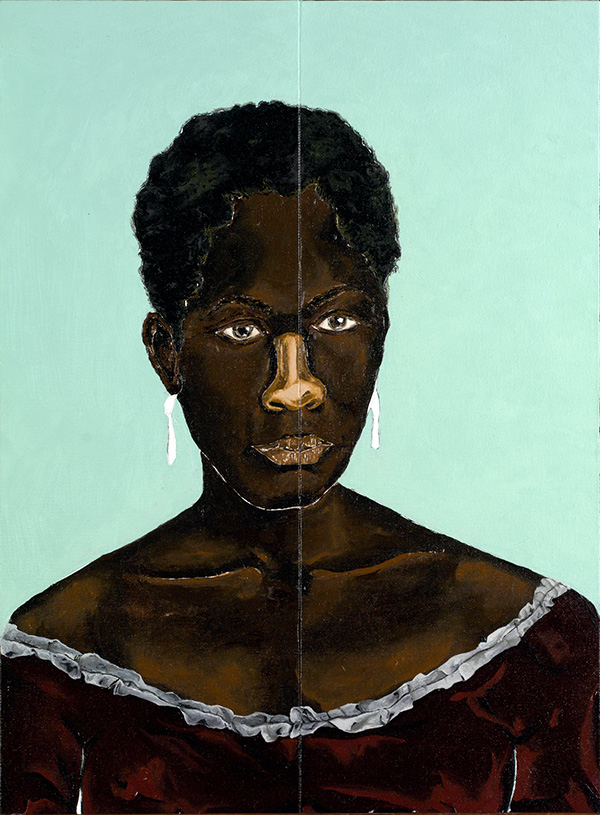Audio Stop 963

oil on canvas
Museu de Arte de São Paulo Assis Chateaubriand, Gift of
the artist, in the context of the Afro-Atlantic Histories exhibition,
2018
© Dalton Paula
Dalton Paula
Zeferina, João de Deus Nascimento, 2018
Read full audio transcript
NARRATOR:
Exhibition co-curator Hélio Menezes.
HÉLIO MENEZES:
These are the portraits of João de Deus Nascimento and Zeferina. They were two important enslaved Black leaders that are not well-represented in traditional narratives of Brazil.
NARRATOR:
Associate curator of African American and Afro-Diasporic Art at the National Gallery of Art, Kanitra Fletcher.
KANITRA FLETCHER:
They were commissioned specifically for the Afro-Atlantic Histories exhibition when it premiered at São Paulo’s Museum of Art in 2018, but Paula has made a series of paintings to commemorate Black leaders whose presence has been removed from official versions of history and whose likenesses were never recorded.
NARRATOR:
Enslaved as a child, Zeferina was brought to Brazil from Angola. She rebelled against the slaveholding system and was one of the founders and leaders of a large quilombo, a community of people who had escaped enslavement, called Quilombo do Urubu.
KANITRA FLETCHER:
João de Deus was the son of a freed Black woman. He worked as a tailor, and he was also one of the people who helped plan the Bahian Conspiracy of 1798.
NARRATOR:
Neither portrait is based on visual records. In the case of Joao de Deus, Paula relied primarily on written records describing him as a Black man who dressed elegantly in the French style – perhaps inspiring the knotted cravat.
HÉLIO MENEZES:
The portrait of Zeferina was inspired by a photograph of a German photographer that took some pictures and made some portraits in Brazil in the 19th century.
NARRATOR:
Paula was faced with the issue of trying to memorialize and portray someone whose likeness was never recorded.
HÉLIO MENEZES:
Dalton Paula used two canvases and put them together to make one single portrait. One can see that those images are vertically divided in a formal reference and figuration of maybe a divided portrait of people that we’ll never be completely able to know their real faces.
KANITRA FLETCHER:
These paintings are recalling 20th century retratos pintados. So, this is a popular tradition in northeastern Brazil, in which, people take their formal black and white photographs and they have them repainted and enlarged and have the figure set usually against a soft blue background like what you see here in Paula’s portraits.
NARRATOR:
Subjects were often featured wearing their finest jewelry. Not so here.
HÉLIO MENEZES:
To reinforce this idea of an incomplete portrait, because it’s not possible to be complete; the history and the violence doesn’t make it possible to be a whole and complete portrait – are the earrings that Zeferina is using. One can see they were just left unpainted. So this is a part of the canvas that the artist chose to not paint.